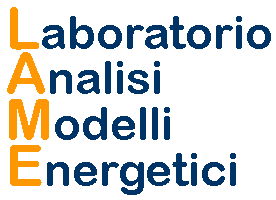
HELINET Network of the Stratospheric Platforms for Traffic Monitoring, Environmental Surveillance and Broadband Services (from 2000 to 2002)
DESCRIPTION OF THE PROJECT
The HeliNet project aimed at designing an integrated network based on HALE (High Altitude Long Endurance) unmanned solar platforms. The HeliNet platform was designed to permit the exploitation of the stratospheric segment, and to be suitable for several cost effective and interoperable applications in various strategic fields such as localisation, environmental surveillance, provision of telecommunication services. The project addressed all the aspects of the HeliNet design. A stratospheric aerodynamic HALE platform, named HELIPLAT, was designed (including the solar and fuel cell energy subsystem), and a scaled size prototype was manufactured in order to perform static tests. The network design was carried out, considering various geographical coverage areas; a common communication interface was addressed, in order to guarantee the flexibility of HeliNet for possible applications. Finally, the study of 3 pilot applications was performed, in the fields of localisation (including the possible integration with the Galileo system), environmental data processing and transmission, provision of broadband services. The project was carried out by a transnational and multi-sectoral partnership of research departments at universities and companies.
LAME ACTIVITIES
In WP2
-
Aerial Platform Design- Scaled size prototype manufacturing
- High Efficiency wing profiles and propellers for high altitude flight
- High efficiency electric motors and drive system
- Fuel cell system design and testing
-Avionics definition
-Supervising design unit
The LAME research group designed the energy subsystem, an integrated architecture which harvested energy from the PV panels mounted on the platform only wing, derived the necessary for daytime electric propulsion, and stored the excess in the form of hydrogen via an electrolyser. The system included a set of fuel cells which were able to transform hydrogen into electricity for nighttime and cloudy days cruise. The challenge of the project was represented by the reduced allowance in terms of volumes and weights. An innovative solution was envisaged for storing hydrogen at high pressure without making use of unbearable multiple vessels. The LAME research group realized also the scaled prototype of the energy subsystem in the Department lab, purchasing bespoke equipment, downscaled to the size of the application or adapted for the use in a hydrogen rich environment. The adopted technologies were BAT at the time of the project and much industrial scouting was necessary in order to find the appropriate suppliers. Missions to Canada, USA and Japan proved necessary to acquire the suitable know-how and hardware.
WORK PACKAGES
-
WP1: Coordination and management
-
WP2: Platform development
-
WP3: System Architecture
-
WP4: System Engineering and Integration
-
WP5: Applications
-
WP6: Assessment & Evaluation
-
WP7: Dissemination and Implementation

